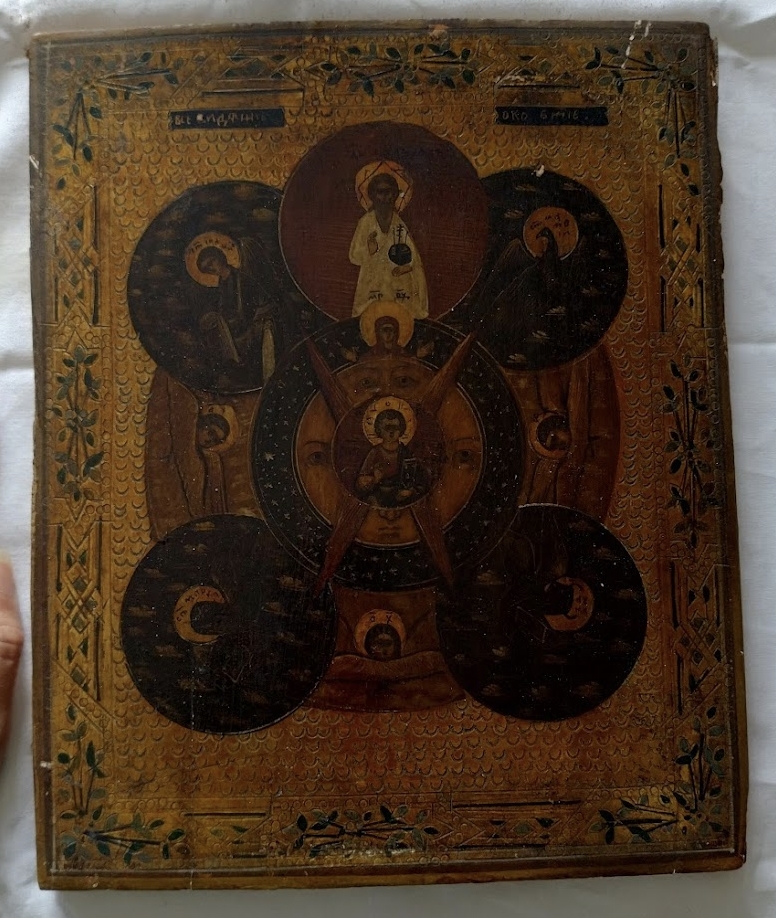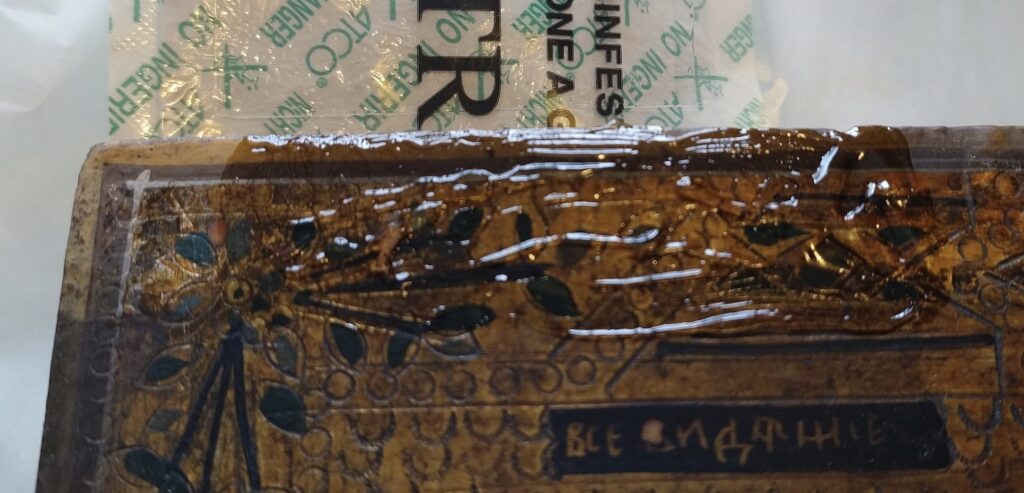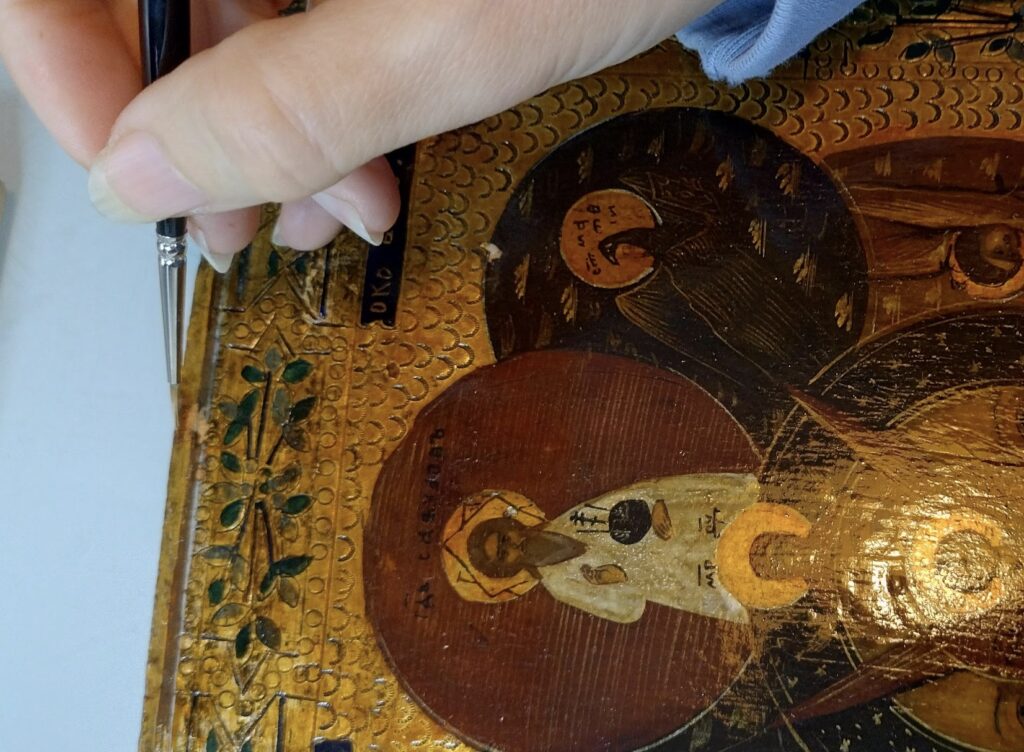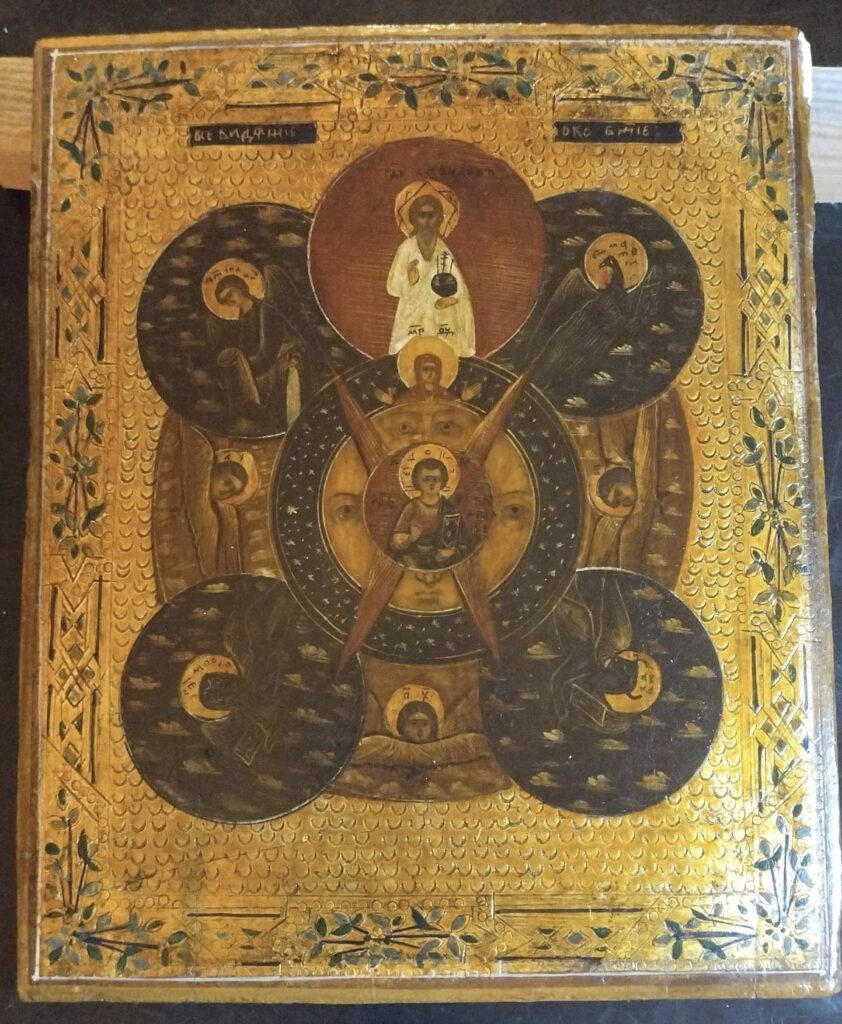I was lucky enough to carry out a restoration on a Russian icon of a person who was really dear to her, a gift from an uncle who was very dear to her.
Iconography of the Russian icon
The icon is presented with a beautiful iconography that includes the tetramorfo, that is, the representation of the 4 evangelists (John, Matthew, Luke, Mark) who take the form of four beings (an eagle, a winged man, a bull and a lion), a series of angels and a blessing Christ surmounted by a Madonna and finally a blessing God.

I really like the decorative frame in this icon composed of sprigs of leaves that after cleaning turned out to be a beautiful green in addition tonality.
Technique of making a Russian icon
Russian icons are typically made on wooden panels, sometimes a single piece, sometimes joined together, usually linden or fir. A preparation of plaster and glue was spread over these, to even out the defects in the wood and create a layer suitable for receiving painting or gilding.
They were often entirely decorated with gold leaf, with the mission technique: the gilding and the resulting shine of the work were to symbolize the divine of this image.
They were then painted with egg tempera and then often varnished with linseed oil.
In our case we have an icon made with meccatura, that is, there is a layer of silver leaf subsequently varnished with an amber tint to simulate the tint of gold. This technique still preserves the typical brilliance of gold but allowed for savings on materials.
The state of the Russian icon
The Russian icon in question was in good condition, what was immediately evident was the presence of woodworm holes and a general opacification and darkening of the painted surface, presumably due to the oxidation of the oily varnish and the accumulation of dust.

The proposed intervention
After consulting with a fellow restorer, we deemed it necessary to carry out an anti-woodworm treatment, a subsequent filling of the flutter holes, a consolidation of a corner that was breaking and a not too thorough cleaning aggressive.
It was important to test the right product for cleaning in order to dissolve the surface dirt without damaging the underlying paint layer, especially avoiding removing the mecca and reaching the silver leaf.
The intervention phases
First we carried out the anti-woodworm treatment, with an anoxic treatment and then with a classic anti-woodworm brush on the back.
Then we did some cleaning tests, identifying the right mixture of solvents to remove the dirt without going to attack the pictorial surface.

With the right mix of gelled solvents, the entire surface was cleaned using short compresses.

Then it was the turn of the fillers, made with plaster and glue, in addition to a small wax filler on the front and the use of balsite to consolidate a wood splinter that was coming off in a corner.

At this point I also decided to paint the icon to give it even more brightness. I then made small adjustments with paint colors where there were small gaps.

And here is the final result:

The final result has restored brilliance to the surface of the icon, without however taking away that “ancient” atmosphere that distinguishes it. The deterioration has been contained, now it will no longer be devoured by woodworms and it has a new protective varnish to protect it.
It remains to be preserved as best as possible, away from direct sources of light, not exposed to the sun, away from humidity, dusted and away from other woodworm-infested objects.

